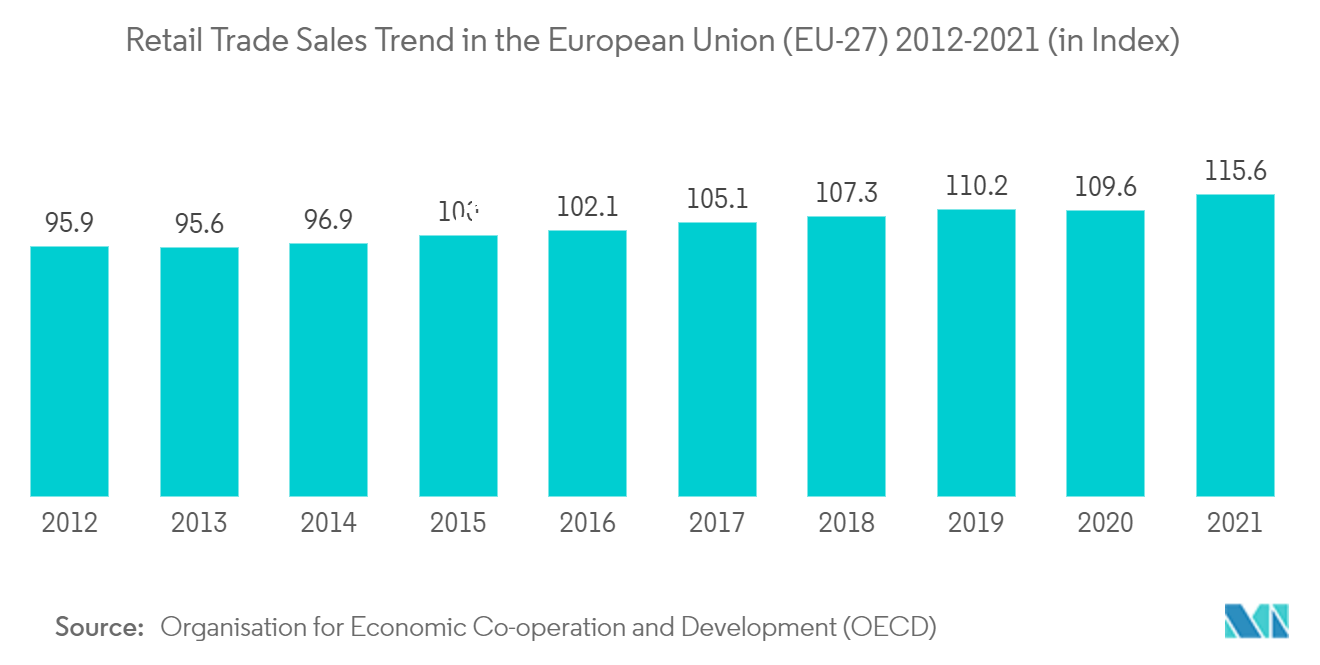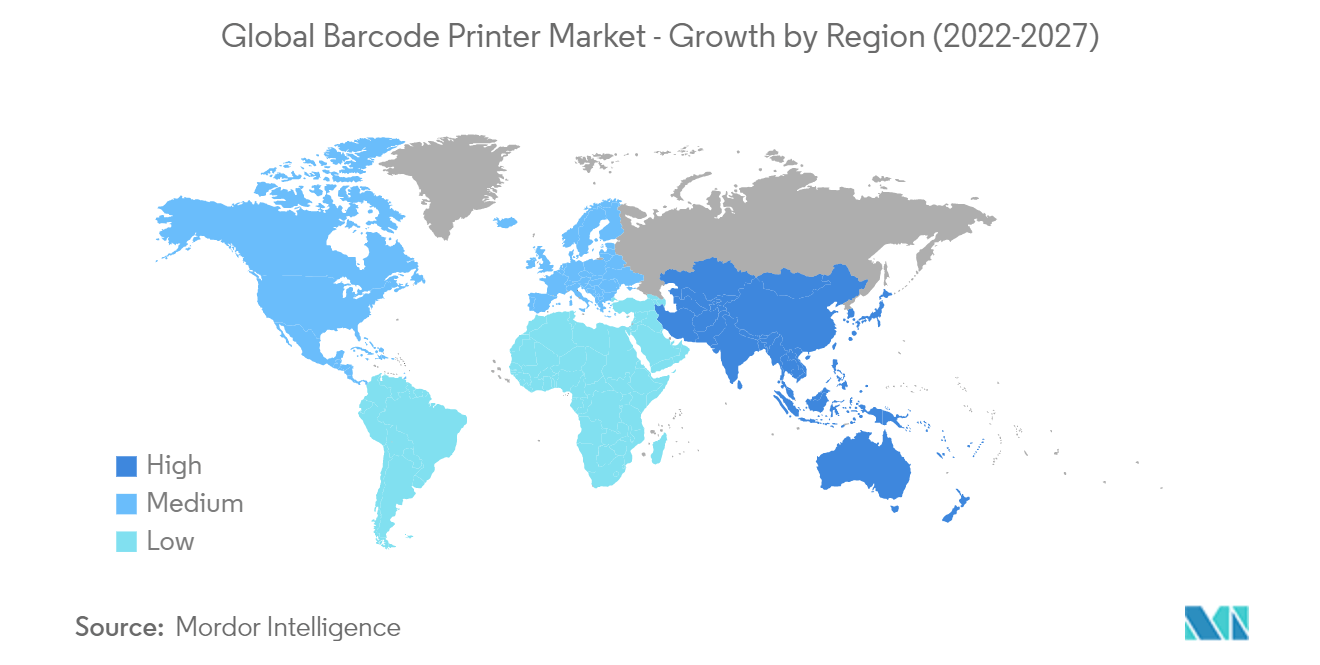Market Trends of Global Barcode Printer Industry
This section covers the major market trends shaping the Barcode Printer Market according to our research experts:
Retail Market is Expected to Witness the Largest Share
- The availability of inventory and an effective supply chain from e-commerce to brick-and-mortar stores is essential. According to the US Department of Commerce, retail sales are expected to reach 27.73 trillion by the end of 2020. The above number is only likely to increase owing to the global expansion of easily accessible e-commerce and mobile platforms, thereby fueling market growth over the forecast period.
- The barcodes enable the retailers to keep track of inventory, automate product re-ordering, compare sales of similar products of national brands vs. private labels, track product attribute preferences such as color, size, etc., customize targeted promotions based on customer buying habits, and identify what buying preferences a particular customer has.
- The two most widely accepted formats of retail barcodes globally are the EAN-13 (International Article Number) and UPC-A (Universal Product Code). GS1 provides a unique 12-digit UPC (Universal Product Code) or EAN company identification number that has to be entered into a UPC-A or EAN-12 barcode on your product's label. This is expected to make the players in the retail industry comply with such standards, fueling the market growth over the forecast period.
- Some of the industry's prominent players to cater to such requirements are coming up with product developments that enable them to boost the market growth. For instance, in December 2021, myBillBook, the Bengaluru-based fintech FloBiz announced the launch of its Point-of-Sale Billing solution for retailers and franchises. The retail industry accounts for 10% of India's GDP. Keeping this industry's scale and specific needs in mind, the solution has been designed to provide a faster billing experience using keyboard shortcuts and barcode scanning.

North America Is Expected to Hold Largest Market Share
- North America is one of the major investors and innovators in the market studied, owing to the high adoption rate of barcodes and labels across various industries. Moreover, the growing end-user industries in the region provide massive opportunities for vendors to invest in the regional market. Many of the significant market vendors are mainly from the United States. Hence, the region also has a high rate of innovation in the market studied.
- The massive growth of the e-commerce industry and the number of online shoppers have increased the need for customized and personalized marketing strategies. According to the US Census, the e-commerce boom revolutionizing the retail sector is expected to boost retail sales significantly. It also suggested that US retail sales increased by 13.1% in November 2021, compared to the same period in 2020, and online sales increased by 6.6%. The growth in e-commerce retail sales is further expected to increase the need for automated and advanced marketing procedures, thereby increasing the demand for ABM solutions.
- Similarly, in 2021, there were over 27 million e-commerce users in Canada, accounting for 72.5% of the Canadian population. According to the government's data, this is expected to increase to 77.6% in 2025. This is expected to create a massive demand for barcodes and labels. Additionally, Amazon launched its transparency program in the country to serialize the products sold on its platform by using a T-shaped QR-style tag to identify counterfeit items.
- The Canadian Food Inspection Agency, in December 2016, made amendments to nutrition labeling, which mandated the regulated parties to meet the new labeling requirements within a five-year transition period, during which they must comply with either the former or the new requirements. Such regulatory initiatives are expected to increase the use of barcodes and labels in consumer-packaged foods over the coming years.
- Moreover, the US Department of Agriculture (USDA) adopted Digimarc Barcodes as an approved digital disclosure method for packaging containing bioengineered food, commonly known as genetically modified organisms (GMOs). Digimarc Barcode is a new-generation visually imperceptible barcode, which can be added to product packaging, retail labels, and hangtags. It may be scanned by compatible consumer phones, retail barcode scanners, and computer vision systems. It also eliminates the need to add a QR method to the product package design and fulfills the new federal regulations.


